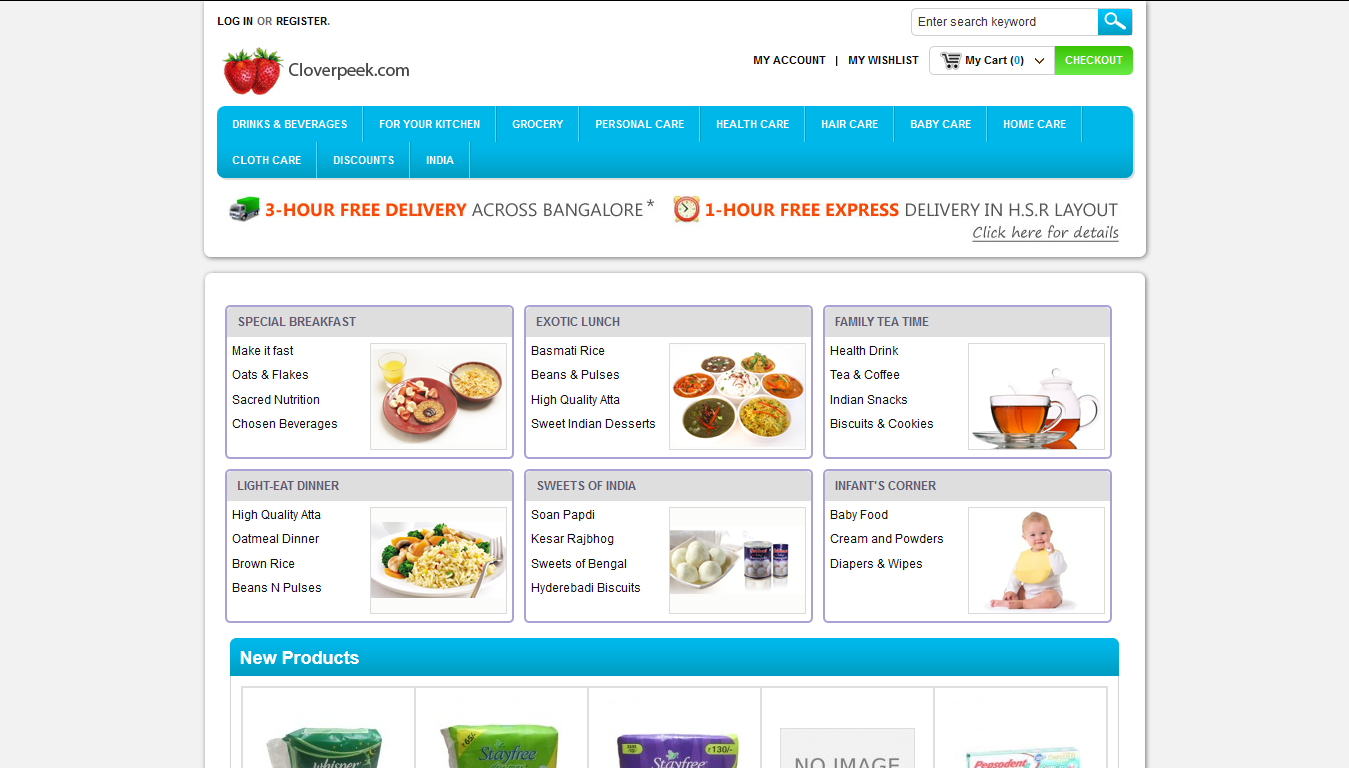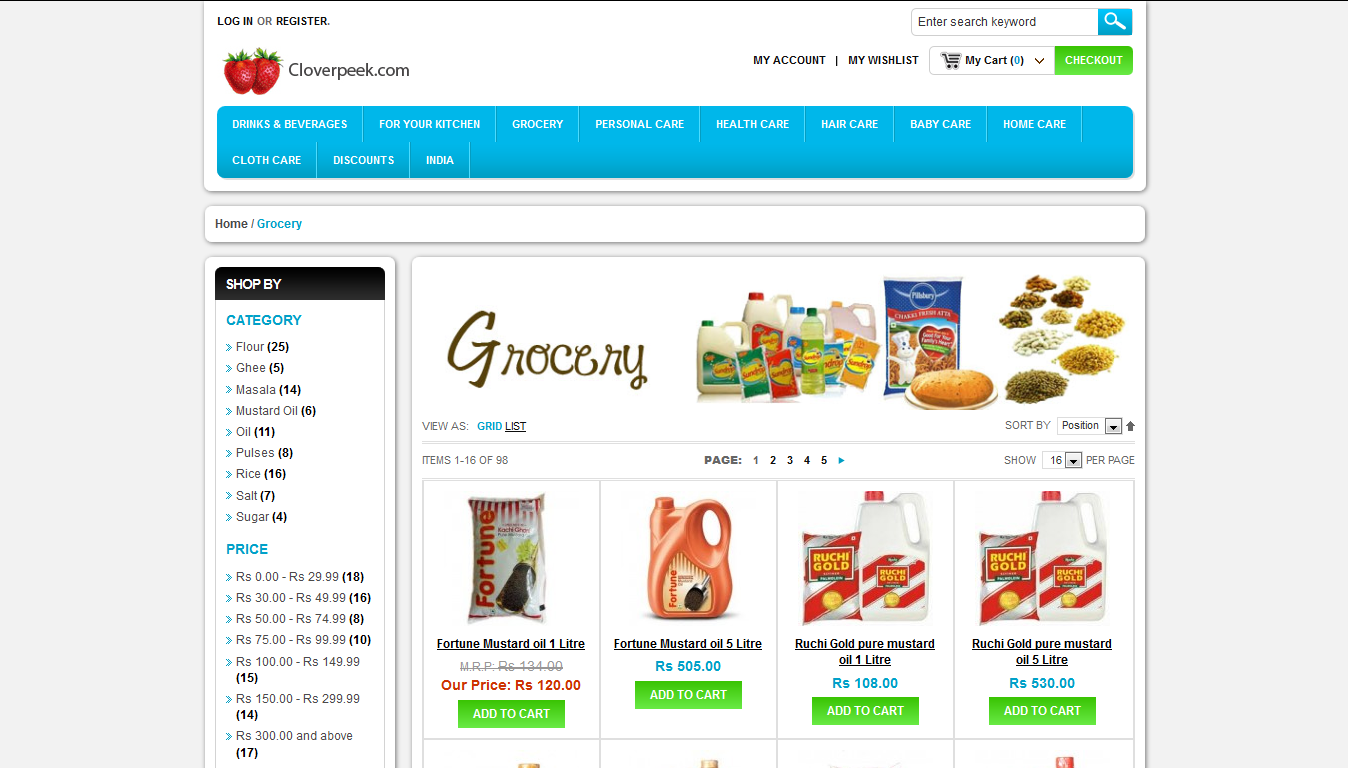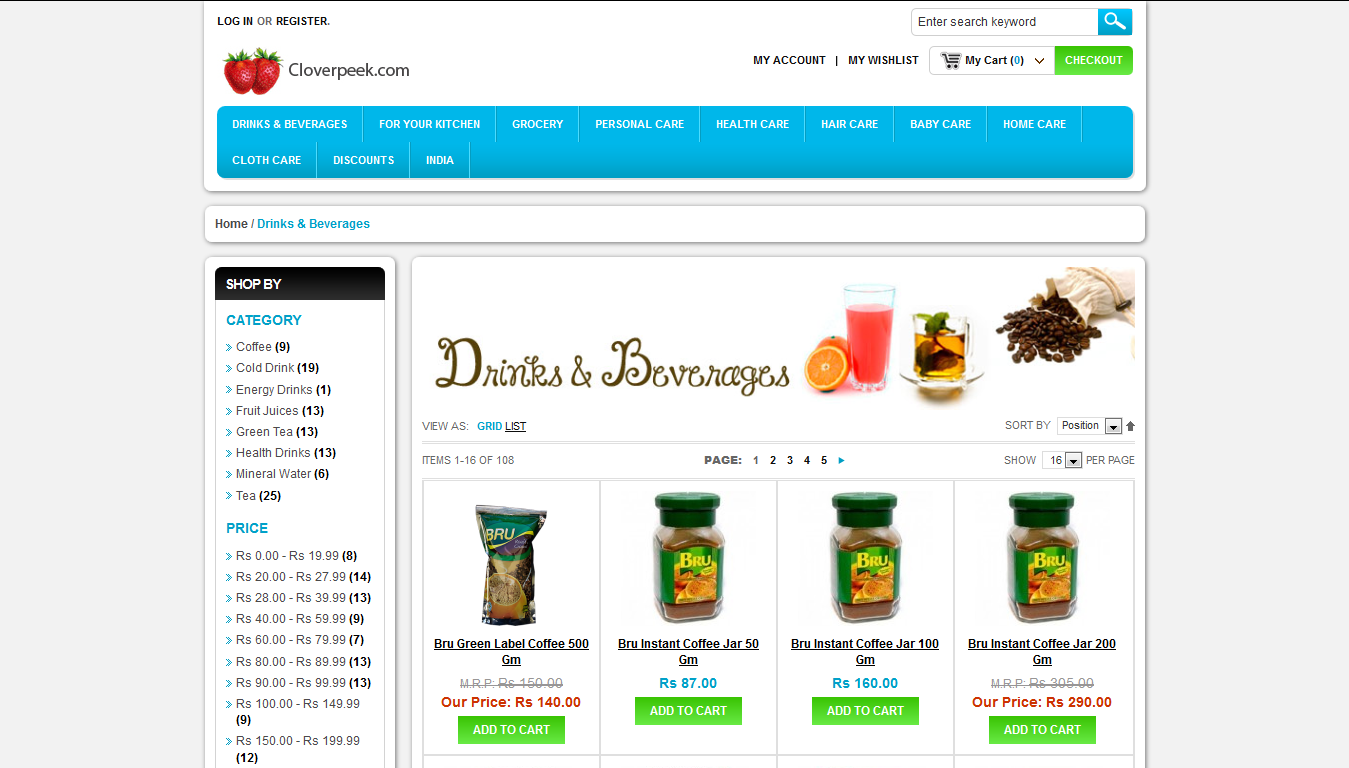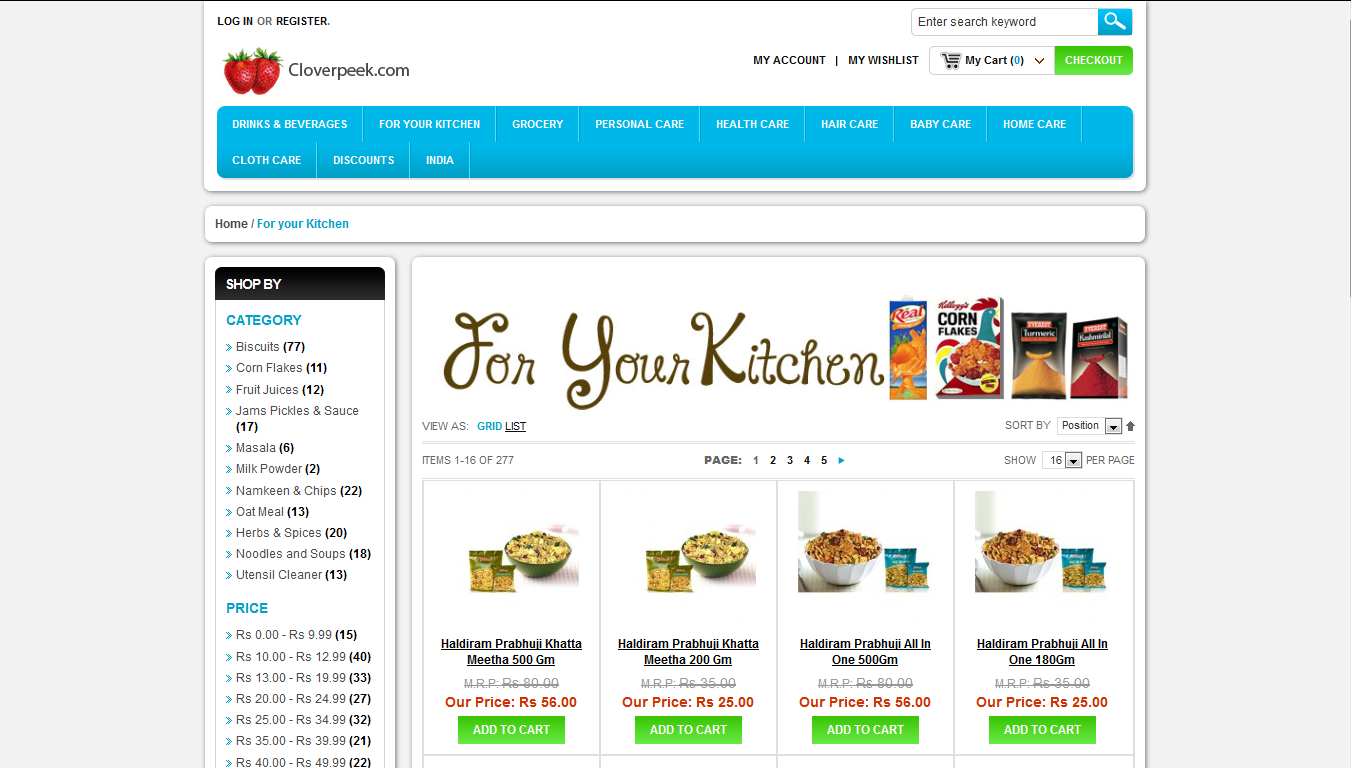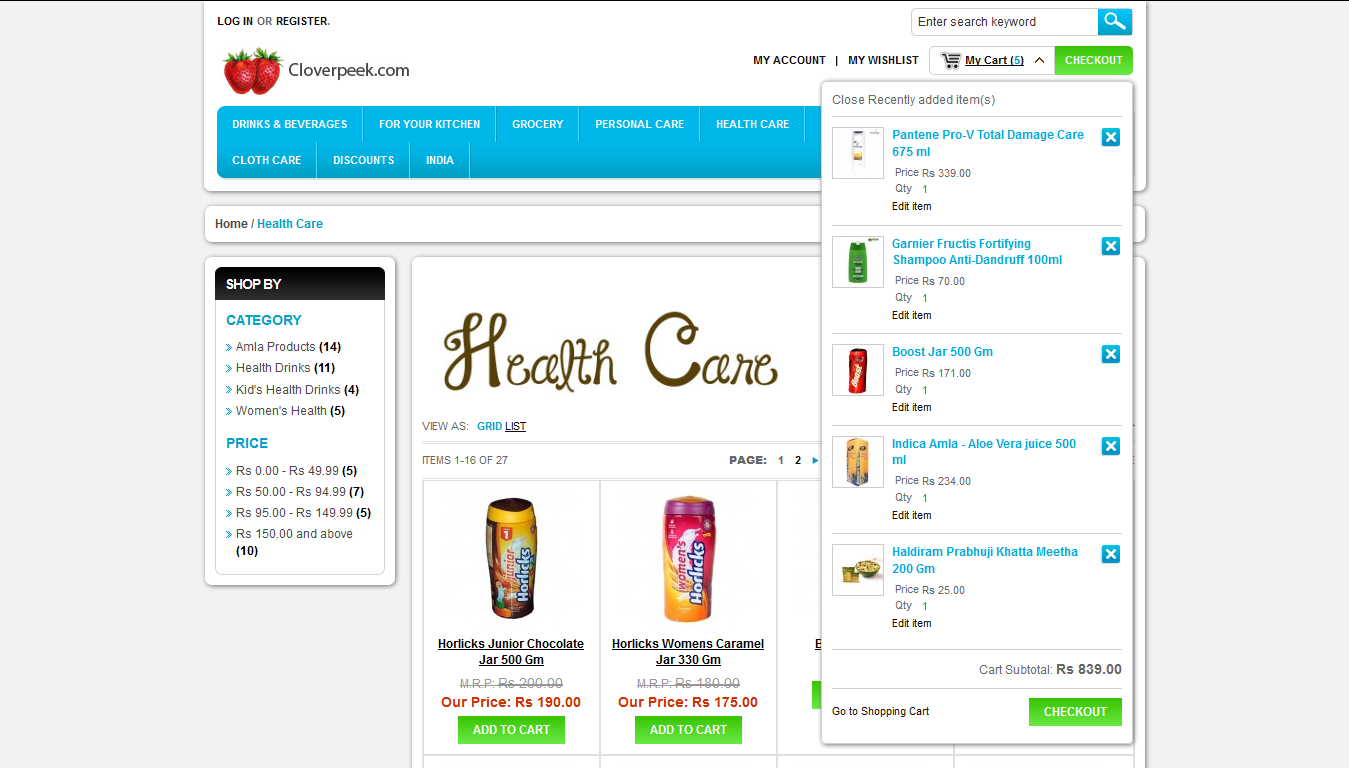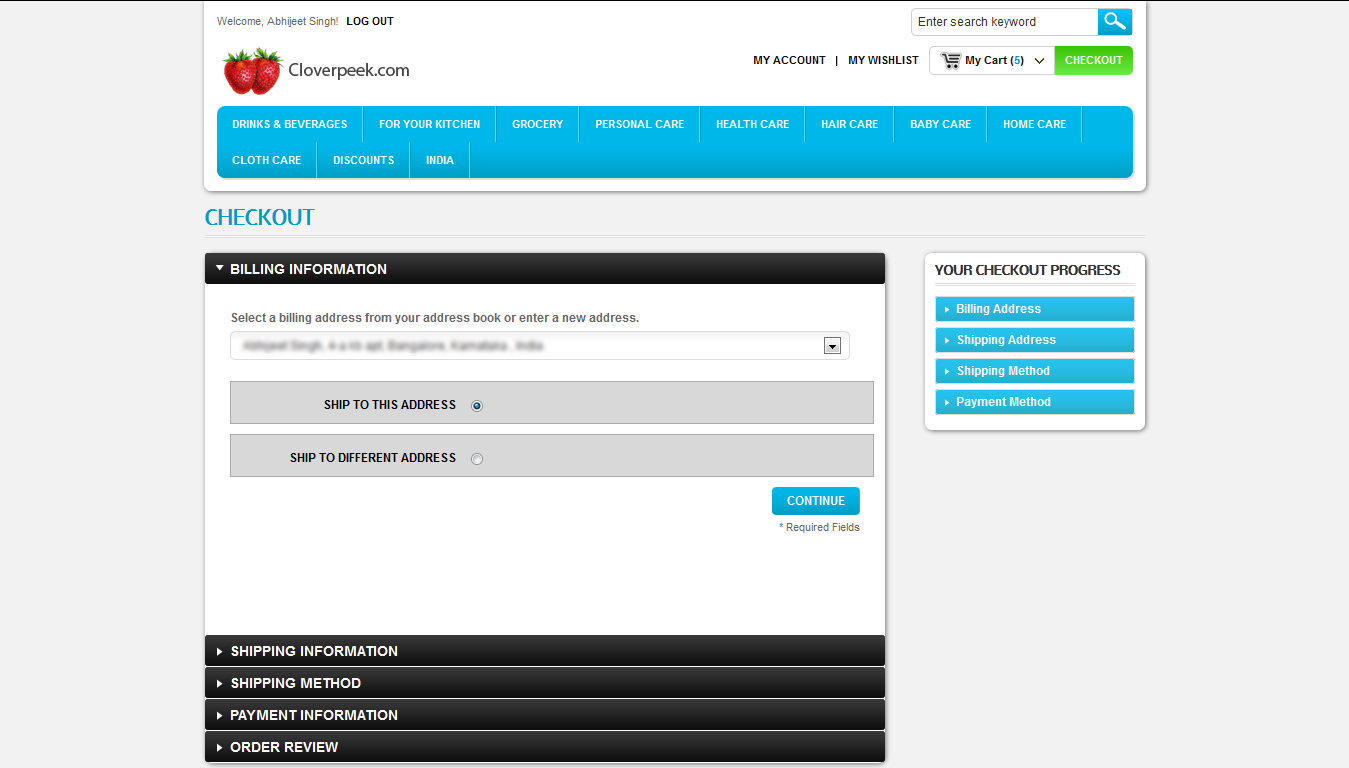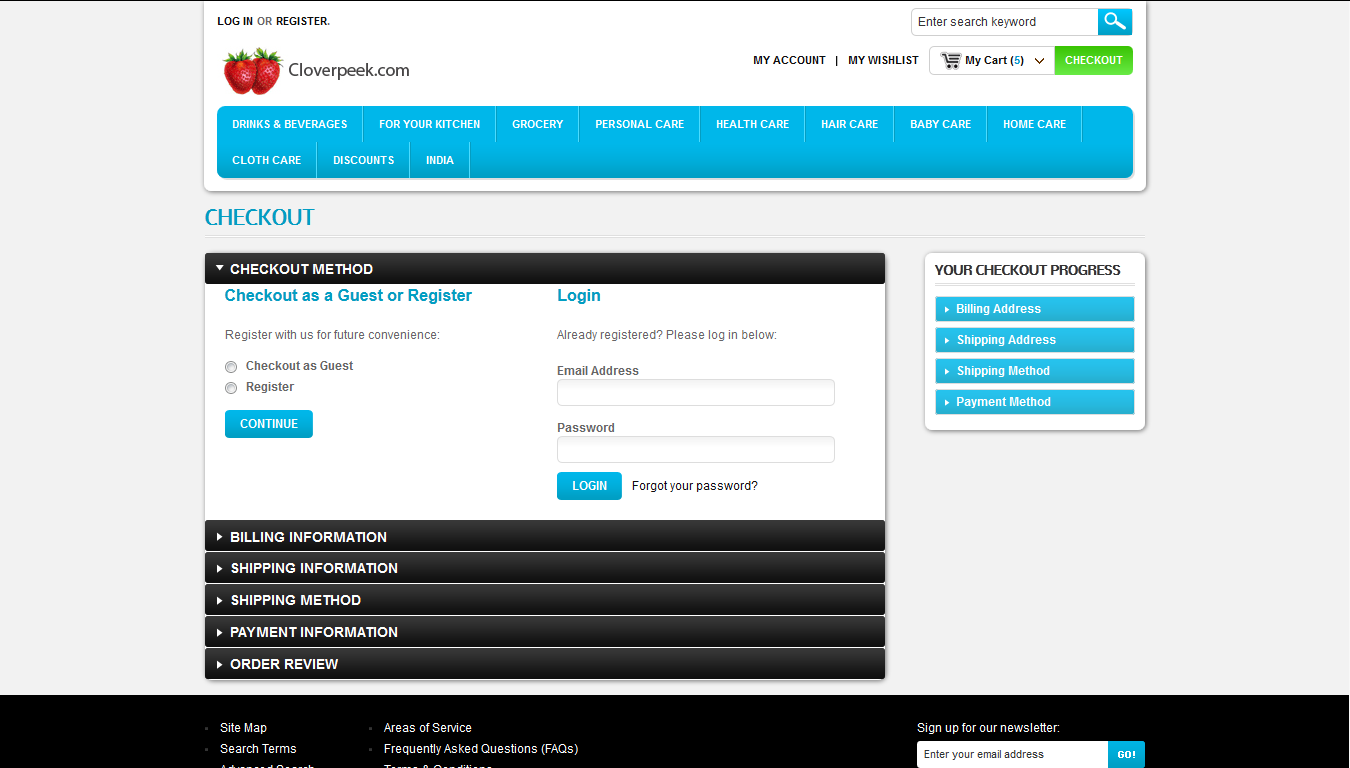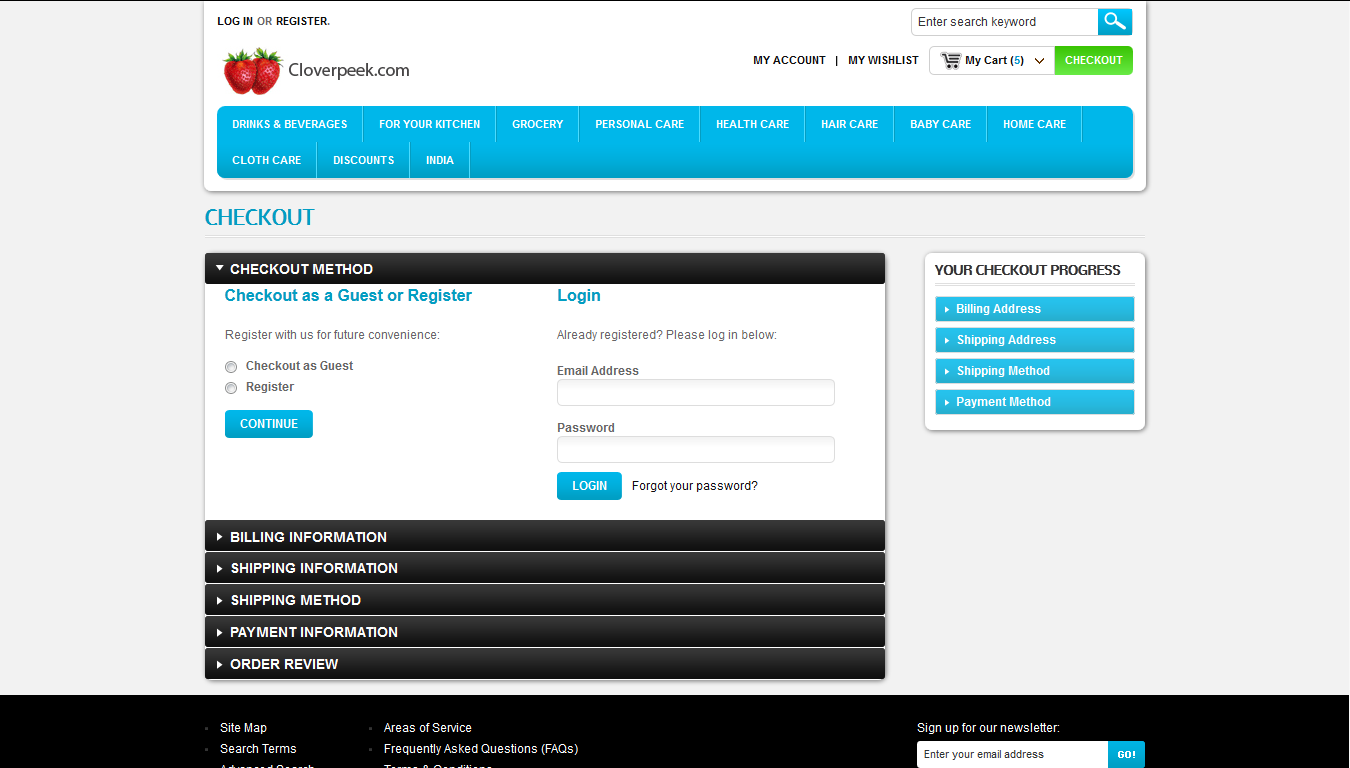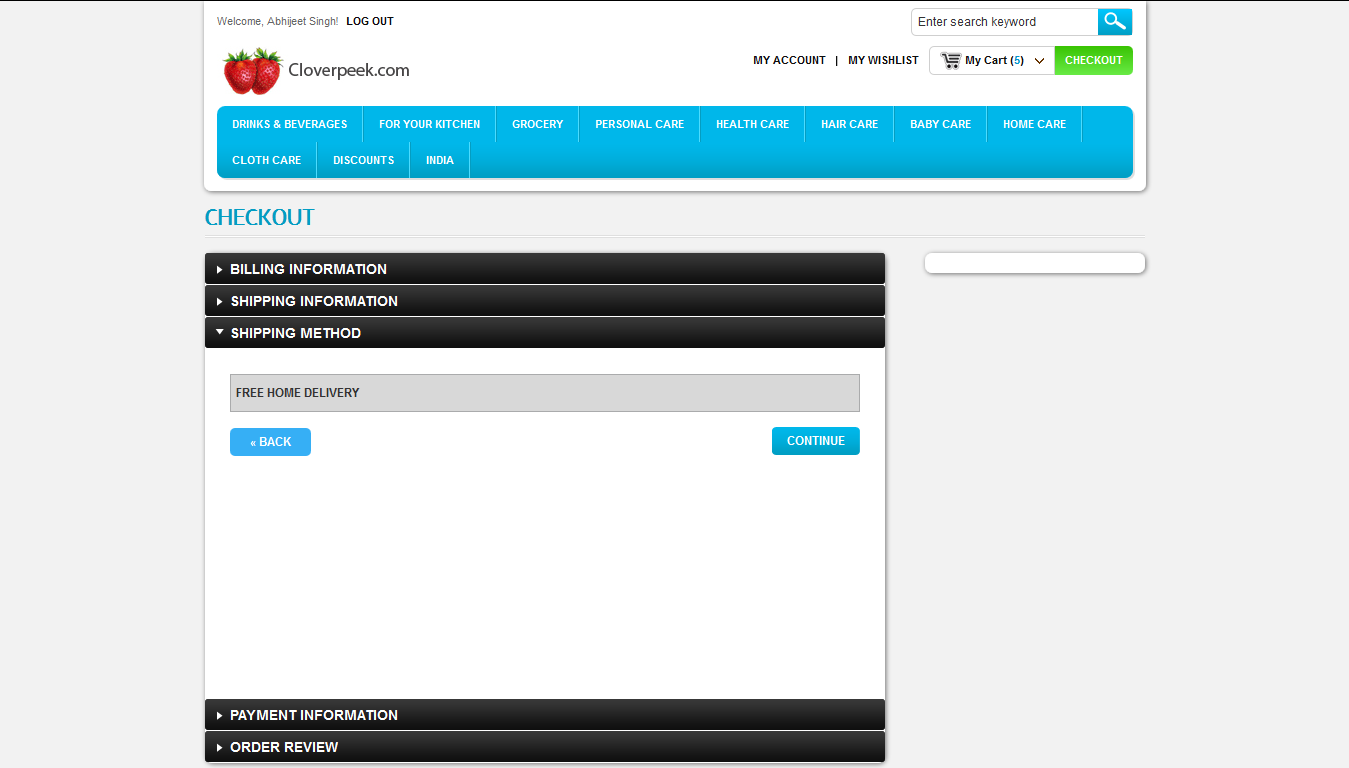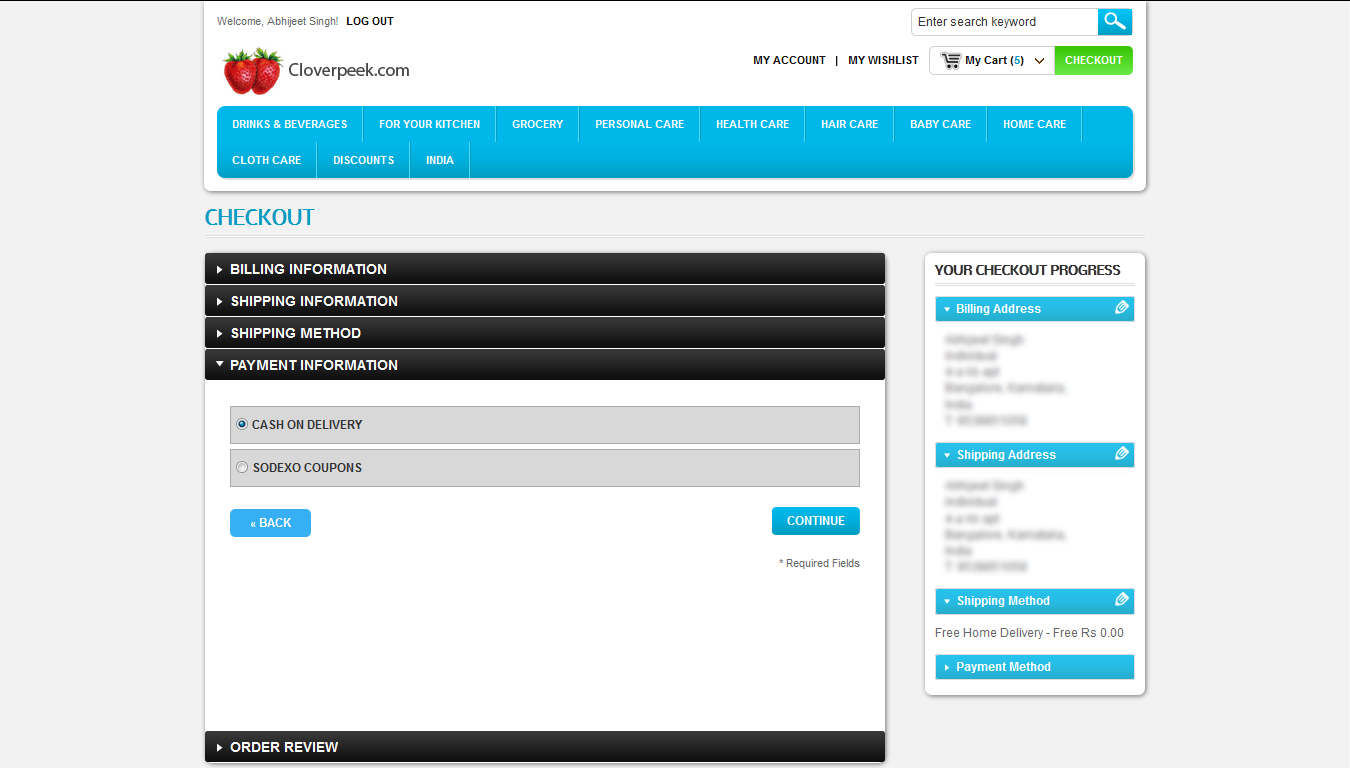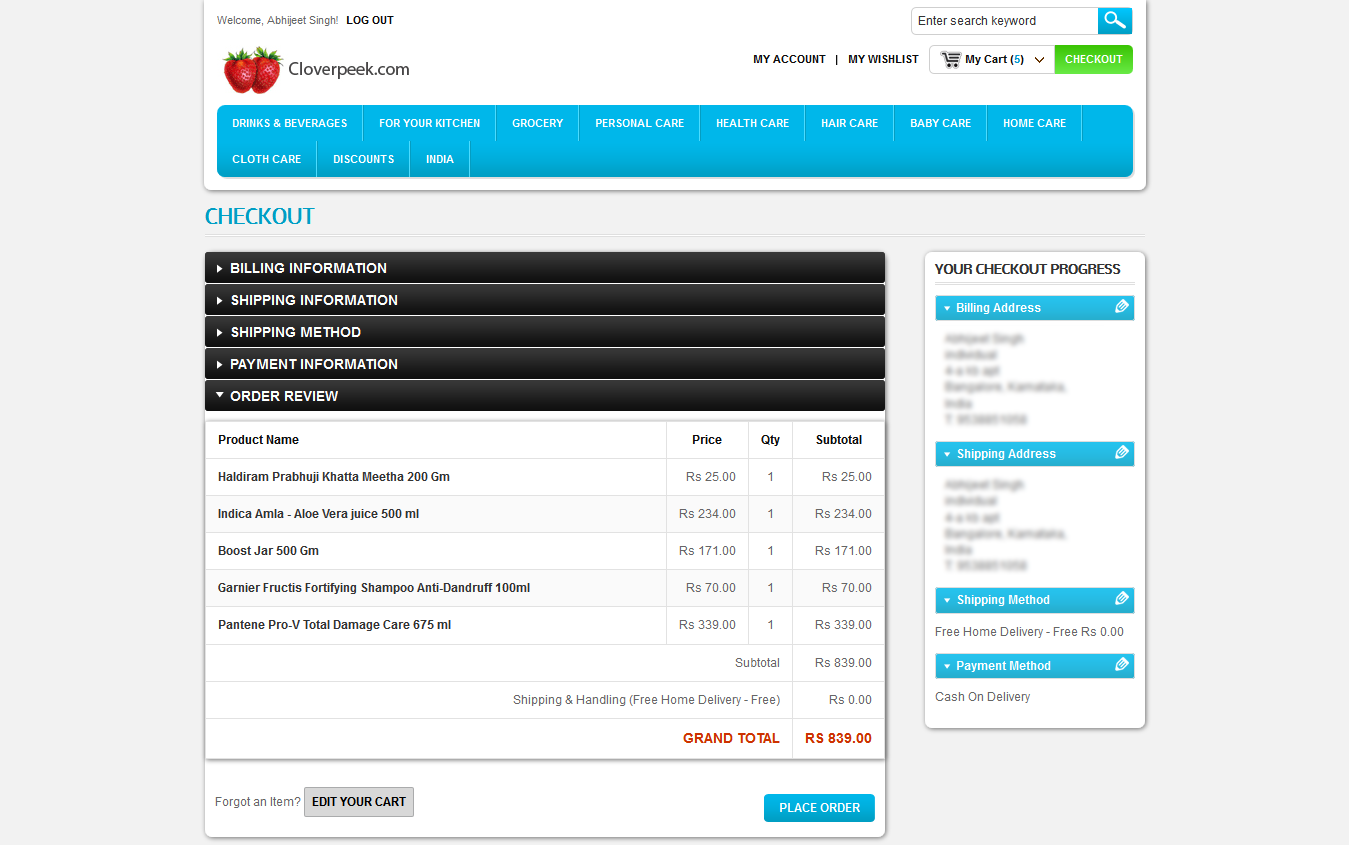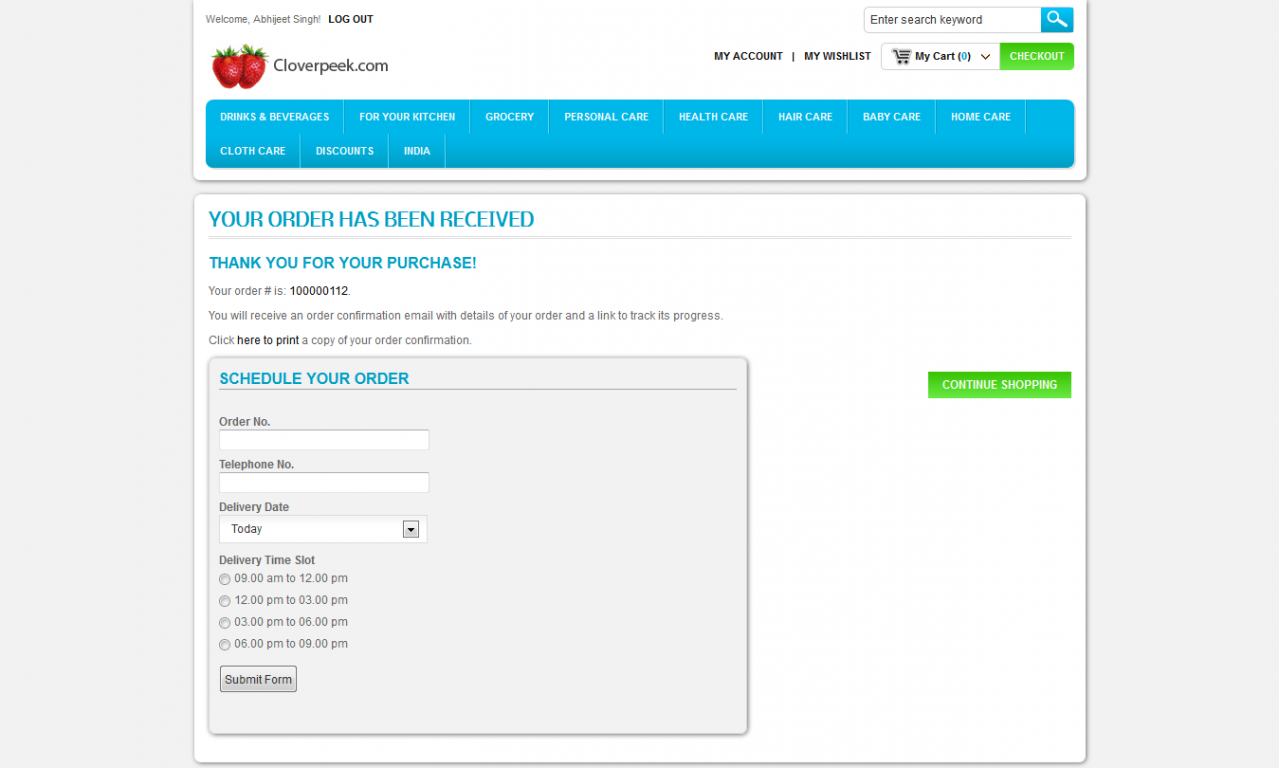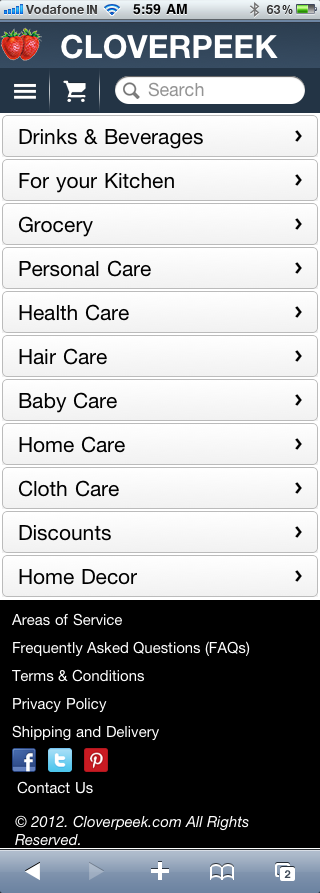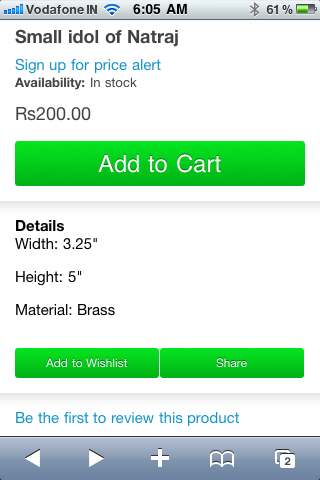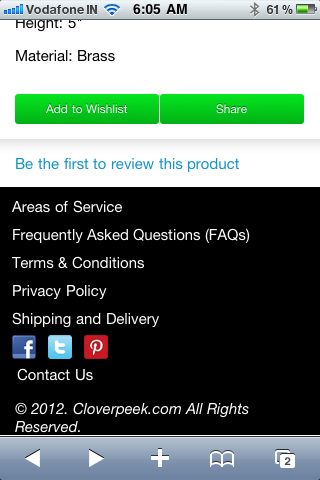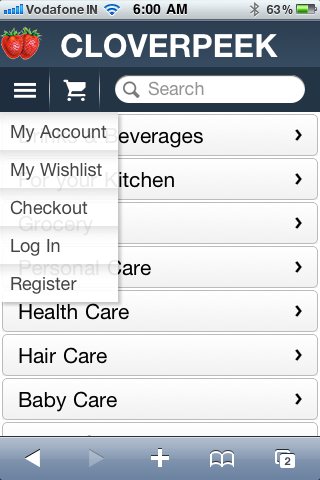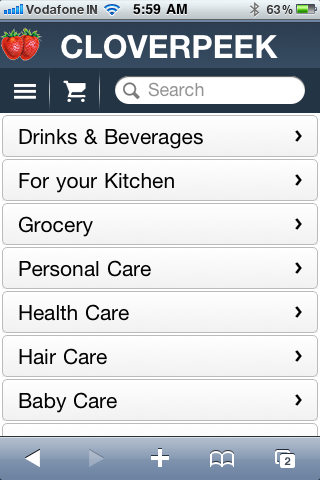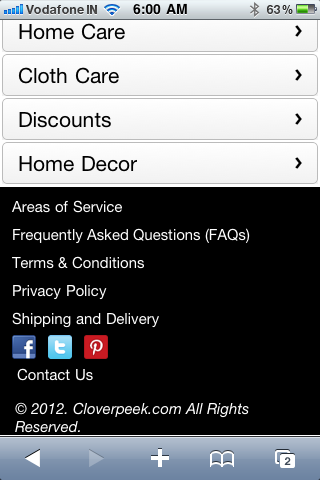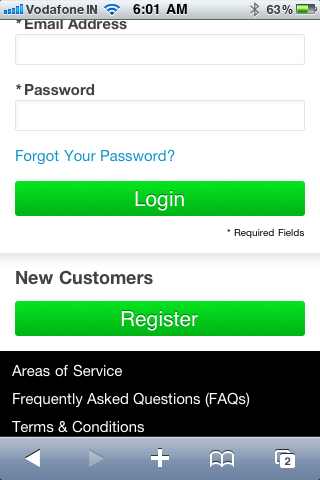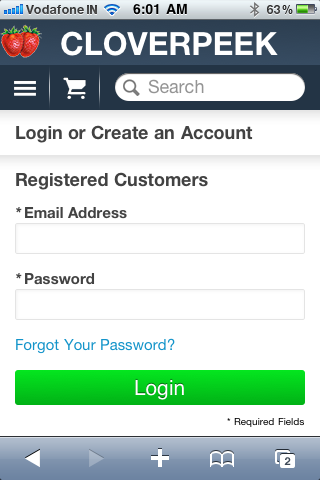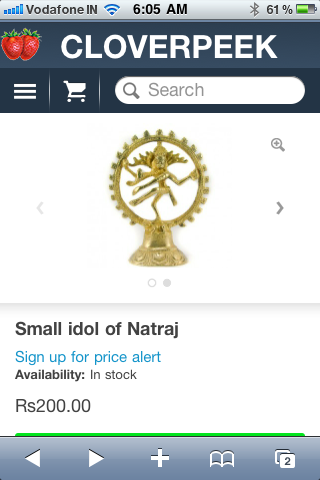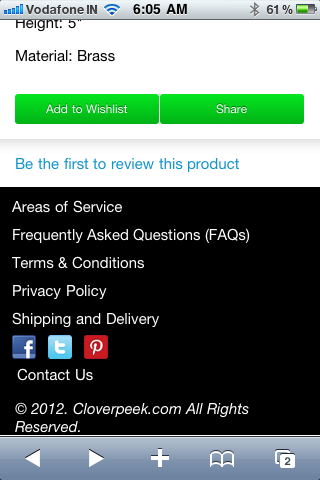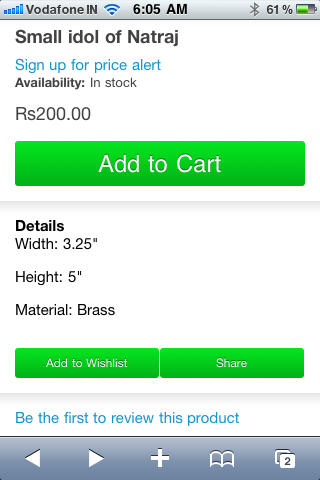
Case Study - cloverpeek.com
2013-14
Overview
Cloverpeek.com was a Bangalore eCommerce startup. They primarily dealt with Grocery, Home Needs, Home and Personal Care products. With their delivery chain, they delivered products across Bangalore. They operated between from 2012 to 2014
My Role
I alongwith a colleague of mine founded cloverpeek.com in 2013. We together invested from our savings to setup the company. My Partner took care of the Sales & Marketing part. While I took care of product development and supply chain management. On the product development side, I worked on requirement gathering, field studies, market surveys. Based on these, I created the Product Plan. Beyond that, I along with two other designers started working on a prototype of the product. We did a lot of mockups, wireframes, and UI Designs and finally came up with the design that we wanted to implement. I also worked on the Product backlog and the Requirement refinement and made sure that whatever has been planned for the product is properly documented. This enabled the development team to have complete visibility of the business and product requirements.
Research
Since this was my first startup and my new advent in the field of User and Marketing research, the first thing that I started with was Competitor Analysis. Though there were not many competitors, few of them that existed then, provided me a good insight into what they were doing and how they are doing. We also created field and market surveys. The survey questions were shared with more than 250 participants. That really helped us iron out the initial requirement of the product.
Primary Users
A market survey that we conducted helped us identify the users. We focussed our attention primarily on the following two user personas
1. Housewives
2. IT professionals
We expected Housewives to be our Primary user persona. we expect them to buy from us few times a week. We would deliver the product to their doorstep. The product order that we expected would be primarily in the categories of Home Needs, Baby Care, Foodgrain, Beauty products, etc.
‘IT professionals’ was the another. We collaborated with several IT companies to supply orders directly in the office to employees. Hence Employees can place the order from the office desk. And before the end of the day, products would be delivered to them at their workplace.
User Profiles
We started with considering multiple User Profiles that we were considering for this exercise. But finally zeroed upon two.
- Housewives
- Working Professional
It was finally decided that we will consider Housewives as the Primary user persona for the product. They would be using the website daily or at least several times a week to order everything they need at home. For homeneeds and FMCG categories, housewives have their needs clearly identified. But in these Covid times, they are finding it difficult to procure things they need at home. Other grocers and online stores have a very huge and bulky catalog. That makes shopping cumbersome. The minimum order size would be Rs 200, hence it was expected that order volume would never be a problem. Order Size would build up with Customer Service and engagement.
User Persona
Information Architecture: Product Plan
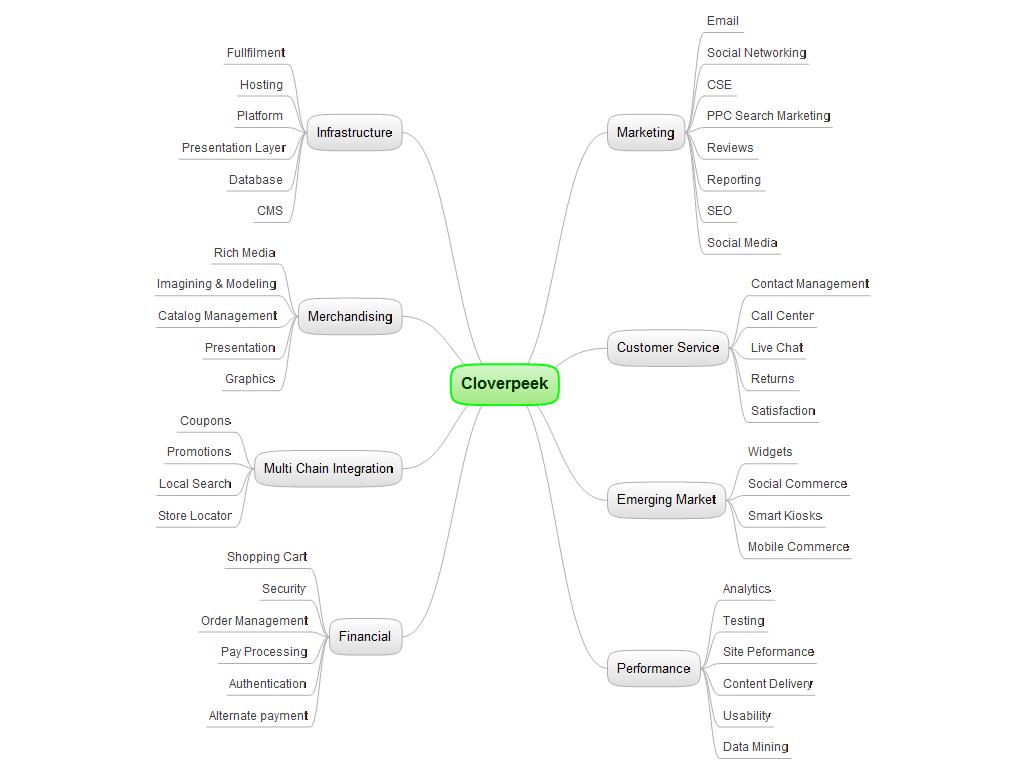
Information Architecture: Product Catalog
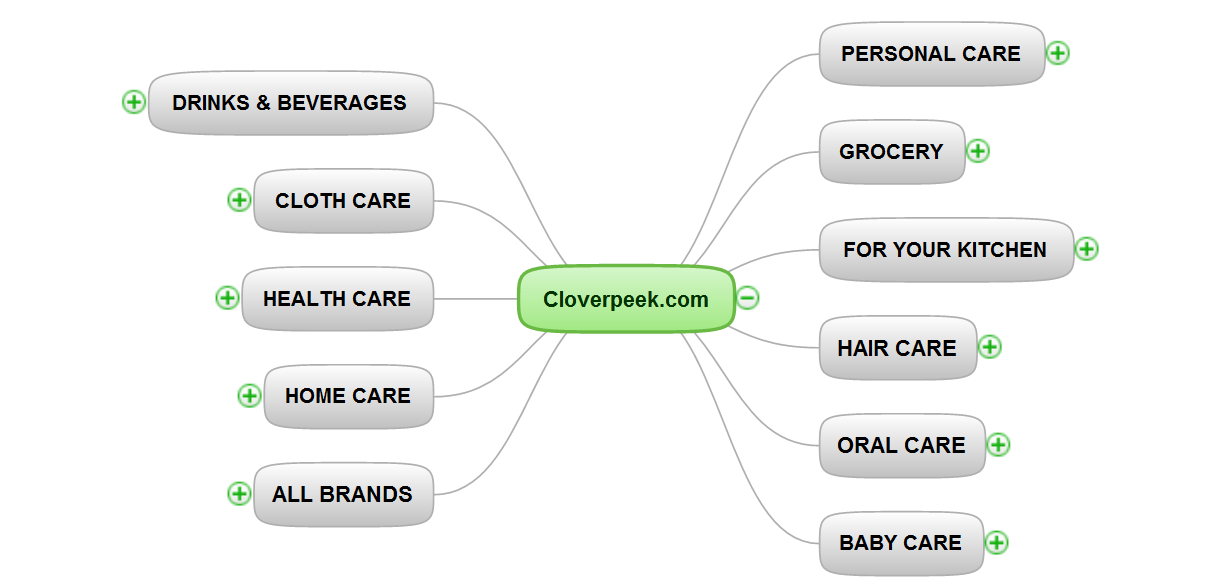
Tools Used
Discover
- Competitor Analysis
- User interview
- Market Research
- User Research
- User Profile
- User Persona
Define
- Gitlab – Product Backlog
- Conceptdraw Mind Map – I.A
Design
- Microsoft PowerPoint
- Pencil Evolus
- Adobe Photoshop
- Adobe Illustrator
Lessons Learned
Cloverpeek taught me several valuable lessons.
1. Don’t worry too much about technology. They will get outdated sooner than expected
2. Gaining new customers is as important, rather more important, the keeping your existing customer happy.
3. Brand loyalty used to exist
4. You need to innovate faster than your Competitors can think and your Customers can Anticipate
5. Founders must be very close to the design team. Rather an integral part of the design team
Final Words
Cloverpeek.com was my third startup. I was enthusiastic and passionate about it. I always felt that online home needs and FMCG segment have not been addressed properly and there is so much work to do. I personally designed all the flows and screens. I personally planned all design and UX Evaluation sessions. I personally created all Journey maps of all user journeys. We successfully operated for more than a year. However, every good thing should come to an end. Because of lack of funding, Cloverpeek.com could not be sustained much longer. It was difficult to cater to our area of business with the existing supply chain and staff sizing.
